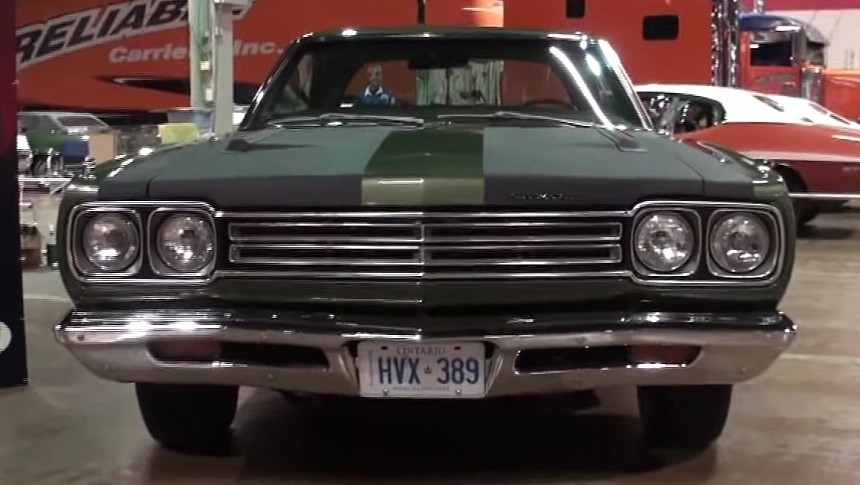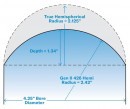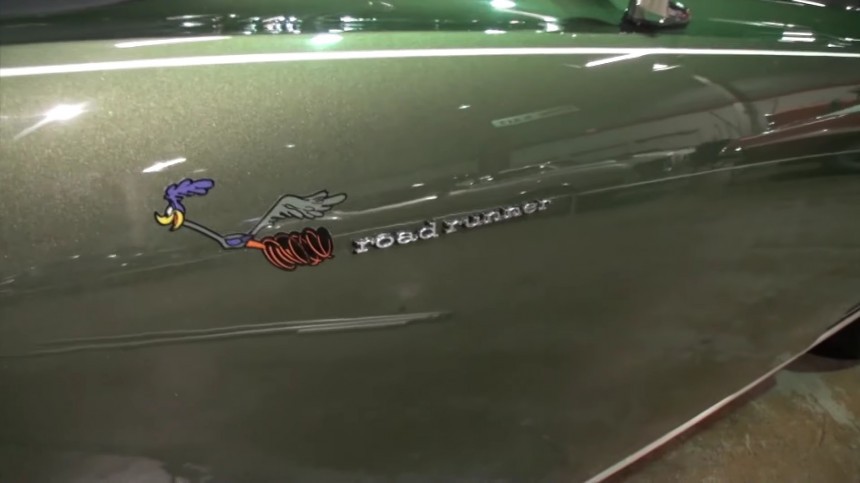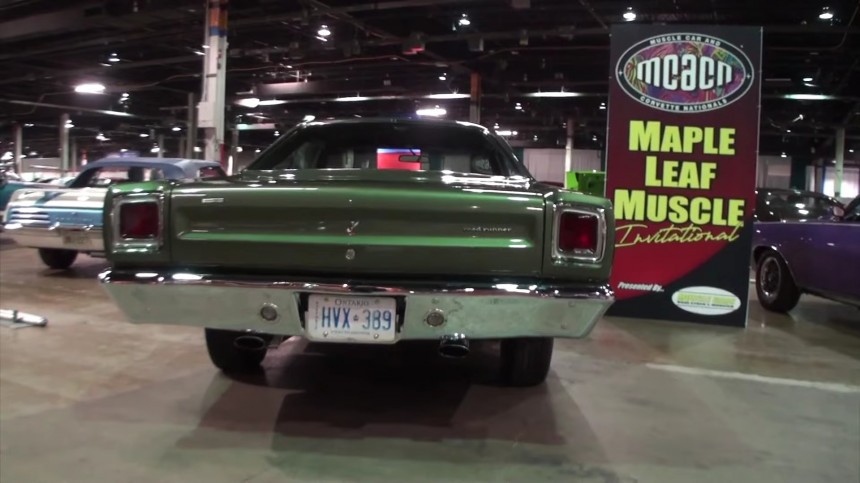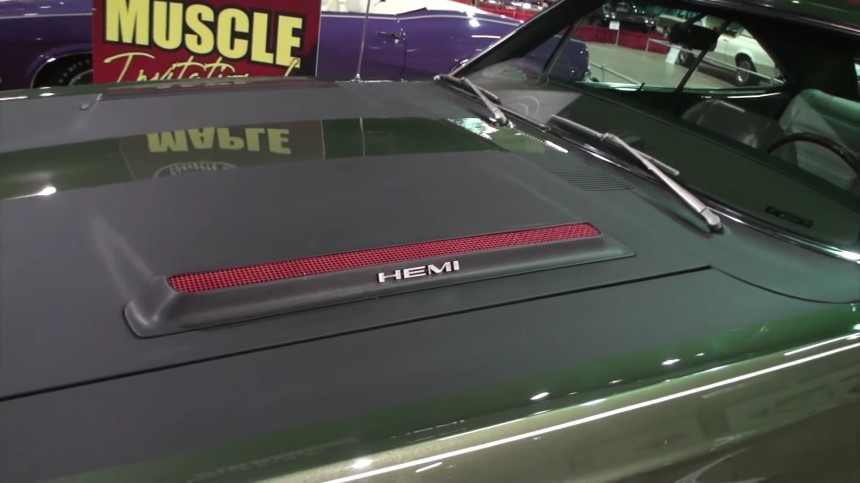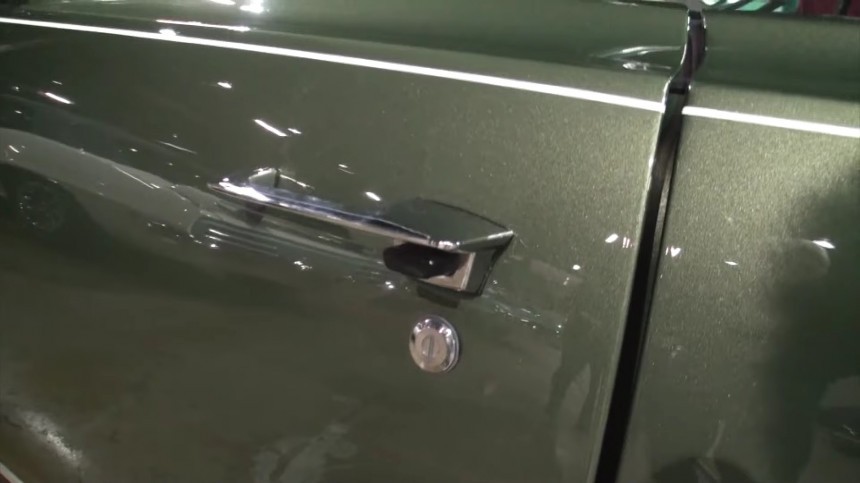Chrysler always had a way with words, mainly when naming its cars. There is something of an untouchable essence in the nameplates of Mopar, see-sawing between playful joy and cutthroat performance. From a buzzing happy yellow bee to a venomous snake to a voracious wolf-of-the-seas barracuda, the models from the Big Three's smallest member have played upon animal references to entice gearheads.
One model, in particular, outdid itself in making piston addiction look like a child's play – the fowl-inspired, cartoon-famed Road Runner. It came out in 1968, and one year later, it grabbed the Car of the Year Award from Motor Trend. The car wasn't as devastatingly popular as the Mustang in 1964, but it posed an irresistible attraction for one market segment.
Young, energetic, motoring followers with an insatiable appetite for short bursts of simple geometric performance, hotheads who thought nothing was more athletic than burying the gas pedal over 1,320 feet of arrow-straight raceways.
Why the Plymouth Road Runner became a hit among this select club of V8-hearted humans is a mystery, but it may have to do with two things. 1) the car was as low-optioned as technically possible, and 2) it was explicitly built for dragstrip deeds. That meant low price, high performance, and no free spoils.
Since it wasn't destined to be grandma's weekly church driver or a bank's manager daily driver, the Road Runner could afford not to be high-end comfortable. The first generation, built from 1968 until 1970, had two engine options.
The standard plant was a four-barrel 383 cubic-inch V8 (6.3 liters), with altered internals to produce 335 hp (340 PS), as opposed to the regular 330 hp (335 PS). The rubber-smoking torque was rated at 425 lb-ft (576 Nm).
A camshaft carried over from the 440-CID (7.2-liter) Super Commando, and a slight increase in compression provided the extra power. Furthermore, two gearboxes were available, a three-speed TorqueFlite automatic or a four-speed manual. When equipped with the latter, the Road Runner could also receive the optional engine (about which we'll talk in a moment).
A third engine choice was introduced mid-year in '69, the 440 Super Commando mentioned above. Thanks to its triple twin-barrel carburetors, it produced a respectable 390 hp (395 PS) and 490 lb-ft (664 Nm).
However, the OTHER engine (putting it in all capitals is not an exaggeration) was the four-letter geometry-mystifying Mopar powerhouse signature that gained religious-level adoration over the decades. In short, it's the HEMI. The long introduction would be this: a V8 with 426 cubic inches (7.0 liters) of displacement, with hemispherical-shaped combustion chambers (I'll address this engineering conundrum in the following paragraphs).
This unconventional (for the American automotive heritage) architecture allowed superior thermic performance: 425 hp (431 PS) and 490 lb-ft (664 lb-ft). It was such a staple of the "Mo" in Mopar that it received its own decals. And for a good reason.
The HEMI became a proper noun under the Chrysler marketing genius. The secret behind its high-end performance status lies in the shape of the cylinder heads – a cutaway slice of a sphere (also known as a spherical cap). For mathematically inclined (pun intended) nerds: the height of the combustion chamber was smaller than the diameter of the cylinder bore.
Geometrically speaking, the dome is not a half-sphere (or hemisphere). Mopar-ly speaking, HEMI is a far catchier name than the following: "Three-dimensional-geometrical-shape-resulting-from-the-intersection-of-a-sphere-with-a-given-plane-that-does-not-include-the-sphere's-center combustion chamber."
Now, why is a HEMI, not a hemi(sphere)? Because the cylinder bore has a diameter of 4.25 inches (107.95 millimeters) or a radius of 2.125 inches (53,975 mm). If it were a true half-sphere, the height of said combustion chamber would necessarily be equal to the cylinder radius. In 1969, a 426 HEMI combustion chamber measured 1.34 inches (34.036 mm). The following diagram should be a better visual explanation.
Regardless of the boring (again, pun intended) ICE details, the Road Runner with a HEMI was anything but that (you tell me one non-exciting HEMI car from that era!). In '69, almost 80,000 Plymouth RRs were sold in the USA, and another 4,727 were produced for foreign markets.
One of the Canadian '69 HEMI Road Runners drew the lucky ticket at the lottery of life and hasn't changed hands in the last four decades. It is also in a great state, despite having served as a daily driver for its current owner for many years.
As you might expect, this rarity is a regular at the Muscle Car and Corvette Nationals car show, and it was there that it caught the eye of a YouTubing classics vlogger, Lou Costabile. The car is a late-'68 build – the headrests were introduced on the 1969-assembled units. Also, the black button under the door handle is another tell-tale of an early model year vehicle.
One of 777 non-convertible HEMI Road Runners built for MY 1969, this car's price started at $3,034. The engine choice alone accounted for an extra $714 (almost a quarter of the base value). A rear defogger and a 150-mph speedometer are some of the spicy details of an otherwise-lackluster automobile.
As scarce in luxury as it may have been, the HEMI Road Runner was a 107.7-mph (173.3 kph) car over the finish line of a 440-yard drag race after a 13.32-second sprint. It sure did live up to its cartoon character name (the fast bird was a $50k copyright usage deal between Chrysler and Warner Bros).
And, since we mentioned the namesake avian of this Plymouth, two things should be noted. One, the "beep-beep" horn cost the Pentastar corporation another ten grand to develop and build. And second, as iconic as it may be for a whole generation of Wile E. Coyote and the Road Runner lovers, the sound is purely fictitious: the real-life bird does not chirp that tone.
Young, energetic, motoring followers with an insatiable appetite for short bursts of simple geometric performance, hotheads who thought nothing was more athletic than burying the gas pedal over 1,320 feet of arrow-straight raceways.
Why the Plymouth Road Runner became a hit among this select club of V8-hearted humans is a mystery, but it may have to do with two things. 1) the car was as low-optioned as technically possible, and 2) it was explicitly built for dragstrip deeds. That meant low price, high performance, and no free spoils.
The standard plant was a four-barrel 383 cubic-inch V8 (6.3 liters), with altered internals to produce 335 hp (340 PS), as opposed to the regular 330 hp (335 PS). The rubber-smoking torque was rated at 425 lb-ft (576 Nm).
A camshaft carried over from the 440-CID (7.2-liter) Super Commando, and a slight increase in compression provided the extra power. Furthermore, two gearboxes were available, a three-speed TorqueFlite automatic or a four-speed manual. When equipped with the latter, the Road Runner could also receive the optional engine (about which we'll talk in a moment).
However, the OTHER engine (putting it in all capitals is not an exaggeration) was the four-letter geometry-mystifying Mopar powerhouse signature that gained religious-level adoration over the decades. In short, it's the HEMI. The long introduction would be this: a V8 with 426 cubic inches (7.0 liters) of displacement, with hemispherical-shaped combustion chambers (I'll address this engineering conundrum in the following paragraphs).
This unconventional (for the American automotive heritage) architecture allowed superior thermic performance: 425 hp (431 PS) and 490 lb-ft (664 lb-ft). It was such a staple of the "Mo" in Mopar that it received its own decals. And for a good reason.
Geometrically speaking, the dome is not a half-sphere (or hemisphere). Mopar-ly speaking, HEMI is a far catchier name than the following: "Three-dimensional-geometrical-shape-resulting-from-the-intersection-of-a-sphere-with-a-given-plane-that-does-not-include-the-sphere's-center combustion chamber."
Now, why is a HEMI, not a hemi(sphere)? Because the cylinder bore has a diameter of 4.25 inches (107.95 millimeters) or a radius of 2.125 inches (53,975 mm). If it were a true half-sphere, the height of said combustion chamber would necessarily be equal to the cylinder radius. In 1969, a 426 HEMI combustion chamber measured 1.34 inches (34.036 mm). The following diagram should be a better visual explanation.
One of the Canadian '69 HEMI Road Runners drew the lucky ticket at the lottery of life and hasn't changed hands in the last four decades. It is also in a great state, despite having served as a daily driver for its current owner for many years.
As you might expect, this rarity is a regular at the Muscle Car and Corvette Nationals car show, and it was there that it caught the eye of a YouTubing classics vlogger, Lou Costabile. The car is a late-'68 build – the headrests were introduced on the 1969-assembled units. Also, the black button under the door handle is another tell-tale of an early model year vehicle.
As scarce in luxury as it may have been, the HEMI Road Runner was a 107.7-mph (173.3 kph) car over the finish line of a 440-yard drag race after a 13.32-second sprint. It sure did live up to its cartoon character name (the fast bird was a $50k copyright usage deal between Chrysler and Warner Bros).
And, since we mentioned the namesake avian of this Plymouth, two things should be noted. One, the "beep-beep" horn cost the Pentastar corporation another ten grand to develop and build. And second, as iconic as it may be for a whole generation of Wile E. Coyote and the Road Runner lovers, the sound is purely fictitious: the real-life bird does not chirp that tone.
